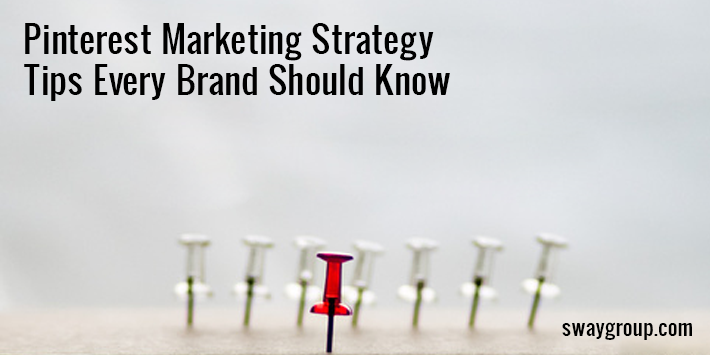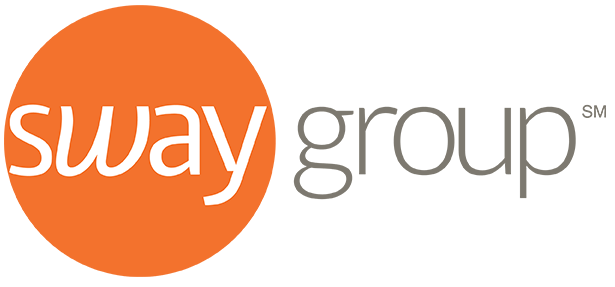If you haven’t been thinking of Pinterest as a top marketing priority for your brand, you might want to reconsider: over 291 million people use Pinterest every month with 90 percent of weekly users turning to Pinterest to help them make their purchasing decisions. While some consumers may feel overwhelmed by branded content on other networks, 78% of Pinners welcome content from brands, with 66% going on to make purchases from branded content posts.

Truly, Pinterest can be an invaluable resource for marketers — but it isn’t always easy to figure out how to best utilize it for your brand. In this post, we’ll share some expert tips on how to improve your Pinterest marketing strategy.
Pinterest Marketing Strategy Tips Every Brand Should Know
Try out our 5 tips to bring your Pinterest marketing strategy to the next level:
1. Use Rich Pins
Rich pins provide more context about an idea by showing extra information directly on the Pin. There are currently three types of Rich Pins: product, article, and recipe. Product Rich Pins show the most up-to-date price, availability, and product information right on your Pin. Article Pins let you show the headline or title, the description and the author of your article or blog post. Recipe Pins let you add a title, serving size, cook time, ratings, and a list of ingredients to recipes from your site — with extra display options like whether a recipe is paleo, vegetarian, vegan or gluten free.
Rich pins stand out in the search results on Pinterest and can provide information on how much a product costs or where something is located with just a glance. They also add a layer of transparency to pins, giving the user a clear view of where the pin will take them if they click through to your website.
2. Optimize Your Boards
Boards help you organize Pins by category, purpose or audience. Your board names and descriptions should be clear, concise, and descriptive. They will help users find your content through search and give them an idea of what to expect. Create titles that match keywords a user would search to find a board of that topic. Keep the board descriptions short and to the point, using similar keywords as the board title. Adding board sections can help people navigate your content (although sections do not affect search), and if you have a business account, you can choose the boards you want to feature at the top of your profile. Keep checking Pinterest’s own suggestions for optimizing boards, since features are always changing!
3. Elevate Your Images
Pinterest is an image-centric site — it’s all about those eye-grabbing visuals. Most Pinterest formats are vertical, and taller than they are wide; a 2:3 aspect ratio is recommended.
High-quality lifestyle photos tend to be the best performers, and the more representative the pinned image is of your content, the more likely someone will repin or click through to your website. The image should be descriptive and make it clear at first glance what the content is about. Adding text on top of an image is a popular way to help users easily distinguish what your pin is about, and including a logo on your pins will help with brand awareness.
Pin design strategies often include a visual call to action, but a lesser-known tip is to include a call to action within the first three lines of the keyword description. “How to,” “Top 5 Tips for,” “Limited Offer”—whatever it is, make sure there’s a strong invitation for the pinner to click through.
For more inspiration, Pinterest’s creative best practices offer plenty of tips and resources for creating successful pins.
4. Observe & Engage with Relevant Users
Take a look at your followers, your target customers, and those repinning your content and pinning from your website. See what they’re interested in – what they are pinning about, who they follow, who they repin, etc. Use this information to inform the content you share. You can also follow them back, repin their pins, leave a like or comment on other pins.
5. Make Pins Searchable
Keep in mind that Pinterest has evolved over the years as more of a search engine than a social network. With more than 200 billion pins on any number of topics (1.7 billion recipe Pins alone), marketers need to focus on making their content as searchable as possible.
Keywords are non-negotiable: they should be included in pin descriptions, board titles, image text, and the influencer’s profile. Use descriptive terms that are specifically aimed at your audience. Research relevant keywords by typing in a search query (related to your promotion) on Pinterest—you’ll notice the site auto-suggests terms to help you narrow your search. These are likely to be the sorts of words and phrases you want to include in order for your content to match your target audience’s interests and searches.
In the past, hashtags were virtually useless on the platform, while the latest word from Pinterest HQ is that hashtags now work like they do anywhere else. Still, they aren’t as commonly used as they are on Twitter or Instagram.
Whatever Pinterest eventually decides to do with hashtags, we currently recommend that pin descriptions include at least 1-2 hashtags with specific keywords. Don’t go overboard, because an endless paragraph of hashtags comes across as spammy to most users, and Pinterest itself may de-rank a pin that doesn’t seem authentic.
In our experience, it works better to include the hashtags at the end of the pin description rather than the beginning. Hashtags now have their place and can help facilitate search, but the description is what will entice users to click through to your content.
Want to find out more about how Pinterest can boost your brand marketing efforts? Give us a call for a custom proposal!
